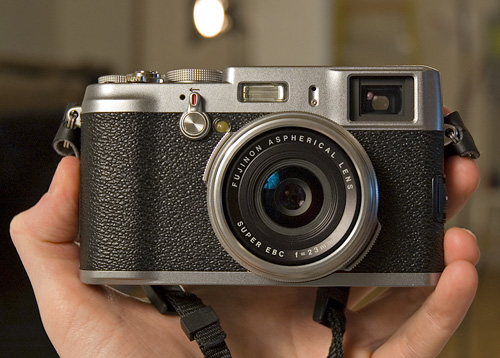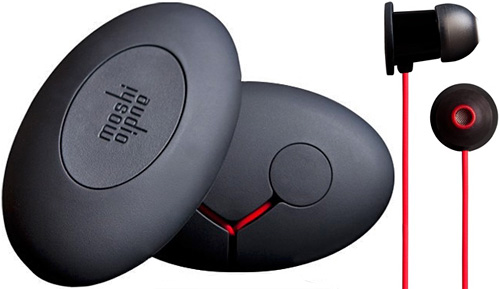There’s not a lot of things (besides ill-planned flights) that can get me out of bed early enough to be somewhere at 9:30 in the morning, but the retro charms of FujiFilm’s upcoming X100 digital camera were certainly enough today.
Announced back in September of last year, the X100 is scheduled to be available sometime in the very near future (its original March release date has been pushed back as a result of the terrible tragedy in Japan) but we got a chance to play with a few sample models with production-ready firmware and it’s left us feeling a little disenchanted with the heavy DSLRs and less-than capable point and shoots we usually haul around. While it’s not the perfect replacement for all of your photographic needs, the X100’s design, capabilities and let’s be honest here, all-around good looks, have us wanting to spend as much quality time with it as we can. More of our impressions after the jump.
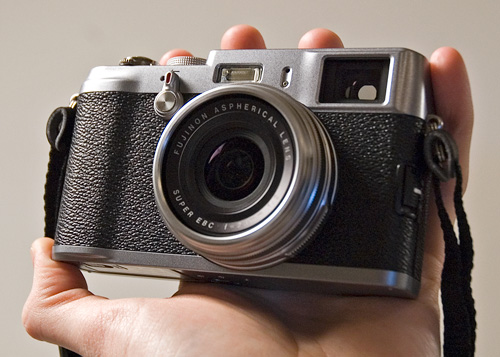
Obviously the biggest selling feature of the X100 is its design. It has been, and probably will continue to be, compared to the retro charms of Leica cameras of yesteryear, thanks to its magnesium alloy metal body and faux-leather accents. But it also feels good in the hand and has just enough heft to give you the impression it’s a solid piece of kit. That extra weight also serves to provide a bit of stability when taking handheld shots with longer exposures. Don’t let my gigantic hand give you the wrong impression of its size though, it’s no where near as tiny as most compact P&S cameras, so slipping it in your pocket won’t be so easy. But I don’t think that’s a bad thing.
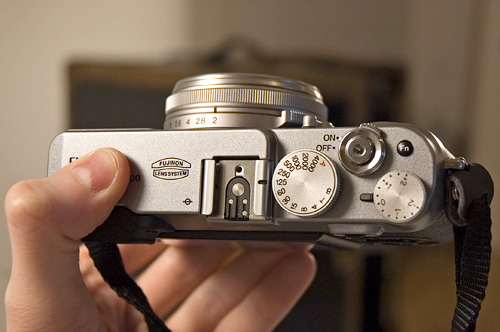
One of the things I like most about the X100’s retro feel and design is that some of the more important and oft-used settings are made accessible as physical dials and buttons on the camera. On top you’ll find a dedicated dial for adjusting the shutter speed, and while this of course can also be adjusted via the UI, I liked the option of being able to adjust it here. Obviously it means there are less steps in shutter speed with the dial, but again, its all part of the X100’s charm.
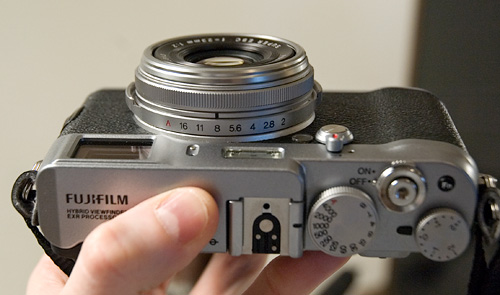
And of course here’s the f-stop dial on the X100’s 23mm (35mm equivalent) lens. It’s a pretty fast lens with a maximum aperture of f/2, and thankfully FujiFilm has included a built-in ND filter if your photo calls for keeping the aperture open together with a slower shutter speed for capturing a bit of blur.
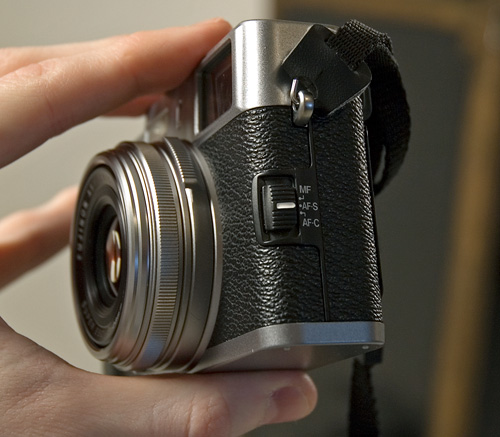
There are also your standard focus options including fully manual using the thin dial on the lens, as well as single and continuous auto-focus modes accessible via a switch on the left side of the camera. From my brief tests with the camera the auto-focus speed falls somewhere between DSLR and P&S. It’s not blazing fast, but it’s still noticeably quicker than my compact Canon. And if you’re into closeup photography the lense’s macro capabilities will let you get in as close as 10cm to your subject.
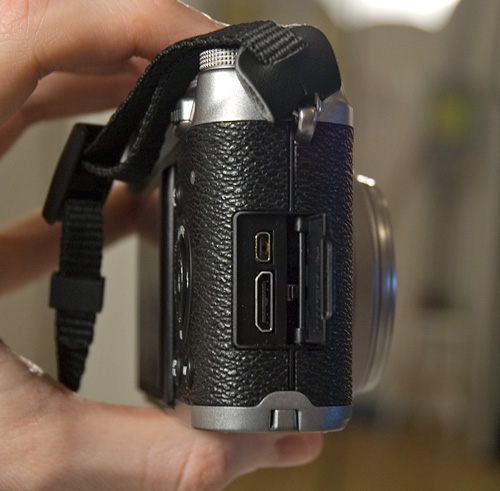
And on the other side of the camera is a small access panel which opens to reveal a USB port and an HDMI connection. Pretty standard fare these days.
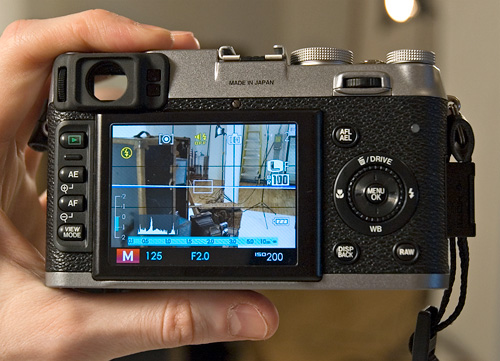
Things get a bit less retro though on the back of the FinePix X100. A 2.8-inch LCD display (460,000 dot resolution) provides a live-view of what the sensor is seeing, and can be configured to display a bevy of real-time technical info about the scene including histograms and a fun cockpit horizon line-like level meter. Or if you’re more concerned about the art behind your photo, it can be stripped down to displaying a minimal amount of info.
But hands down the best part of the X100, which is also the hardest part to convey through photos, is the hybrid viewfinder. By default it will just show you your framed scene like a $3 disposable film camera’s viewfinder would (with about 90% frame coverage) but using a unique system of prisms and an LCD, it can also show you an overlay with similar technical info as what you see on the larger LCD display on the back. The overlay looks pretty fantastic thanks to its 1,440,000 dot resolution, and stays pretty much invisible save for the info it’s displaying. Even though looking through the viewfinder doesn’t show you exactly what the sensor is seeing (it is slightly off to the side and above the lens) this extra capability will probably have more people opting to peer through it when framing a shot, rather than chimping with the LCD.
You can even switch to a fully electronic view in the viewfinder if you prefer, which lets you do things like see the camera’s ‘film-look’ effects applied to your framed scene in real-time. And the 3 modes are all easily switchable via a dedicated switch on the front of the body.
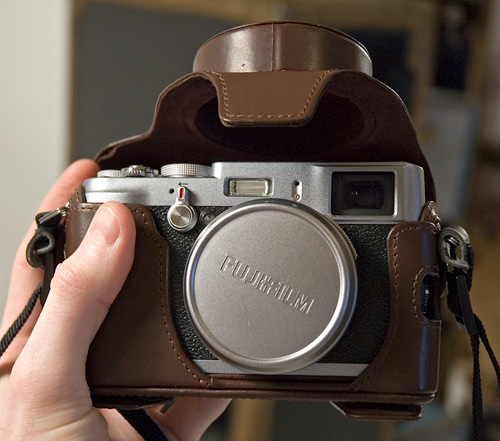
Finally, while I raise an eyebrow when it comes to its practicality, the X100 will also have an optional, though very stylish, stitched leather case allowing you to still use the camera while it’s inside with the lid flipped back. It adds a lot of sex appeal to the camera, I can’t lie, and it will probably make random people more relaxed when snapping candid photos of them, rather than shoving a DSLR lens in their face.
Overall, while the FinePix X100’s $1199.95 price tag will keep it out of most amateur photographer’s hands, my brief hands-on with it today has me pretty excited about its potential as an easier to carry alternative to a DSLR. Unfortunately I didn’t have a chance to really put it through its paces when it comes to image quality or testing the noise levels when boosting the ISO, but in the coming weeks, depending on the availability of the camera, we should have an opportunity to give it a real shakedown and post a full review.

